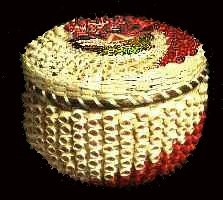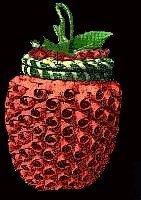By Frances Densmore


![]() Sweet Grass is the hair of our Mother, each strand alone is not as strong as when braided together.
Sweet Grass is the hair of our Mother, each strand alone is not as strong as when braided together.
Also called: Buffalo Grass, Vanilla Grass, Seneca Grass
hierochloe odorata
Description
Sweet Grass is a native, perennial grass that is hardy and sweet-smelling. It is long-lived and has widespread roots. If you plant them in your garden, the area will be permanently dedicated to sweet grass.
In the spring, while plants are still growing, the leaves are unscented. The sweet smell develops with the unique flowers. Sweet Grass leaves will curl when dried in the sun.
Habitat
Sweet grass grows in moist meadows, marshes and along the shores of streams and lakes in North America, usually along with other grasses.
Growing
In the upper northern part of America sweet grass should be grown in full sun. In the central and southern United States, sweet grass grows best in part shade.
Sweet Grass is very winter hardy and goes dormant to the roots in the cold temperatures. They will resprout when the temperature gets back above 40 degrees. You can protect the roots by putting a mulch of straw over them in the winter. They will resprout faster that way. But it is not necessary. This plant will grow wild as far north as the Arctic Circle!

You can grow plants from seed or buy "plugs" from nurseries or garden/landscaping stores. The plants you would produce from seed would take about 4 years to get to the size of a plug plant in 4 months. Once the grass starts setting down it roots and multiplying, you can pull up your own plugs to replant.

Keep plants moist, but not overly wet. If the leaves start to curl, the soil is too dry and that is about the only thing that will kill sweet grass.
During the growing season, always fertilize at least twice. Please fertilize organically with blood and bone meal or hoof and horn meal. And if you are cutting the grass for braids, fertilize more often. The wild stands of sweet grass are disappearing because nutrients are removed from the ground during harvesting and not being replaced. If you are wild harvesting sweet grass, please leave an offering of five pounds of organic fertilizers per every 100 square feet harvested. You can harvest when the grass is one year old.

The peoples of North America consider this plant sacred. It plays an important part in purification ceremonies. The leaves are dried and made into braids. Their incense smells like vanilla. It is also brewed as a tea for coughs and sore throat. Many people make baskets for bread, sewing, storage, etc. Basketmaking is an important part of cultural heritage.
Few baskets are made from sweet grass alone. If they are, they are usually no more than 3 inches in diameter. Baskets are usually made with other ingredients like bulrush, long leaf pine needles and palmetto leaves. To take care of a sweet grass baskets, simply wash in soapy water, rinse in cold and let air dry. This is all the care they need.

What the Ancestors Knew
The
Blackfoot inhale the smoke from burning leaves for colds. They also make a tea for coughs and sore throat. The leaves and boiled hoof produce a sticky substance that was used as a hair tonic. The stems were soaked in water and used for chapping and windburn and as an eyewash. Sweet Grass is also chewed as a body strengthening agent during times of ceremonial fast. It is said a tea made from the blades is good for sexual infections in men. The leaves were also rubbed on horses suffering from saddle sores.The
Piegans use sweet grass as a sacred element in sweat lodge healing ceremonies. Pieces of the braids are smoked over hot coals or stones. The incense is a purification, removing earthly smells from the body. The Piegans always make the sweat lodge ceremony an important part of their Sun Dance Celebration every year.The
Chippewa use sweet grass as a medicinal herb. Strands of it are also used in making baskets, bowls and mats. Birch bark is used as the center of most baskets with braids of sweet grass sown around it. The people use bits of braids as incense. It was also worn around the neck like braids of hair.To the
Anishinabe, Bode'wad mi and Odawa, sweet grass is one of the four healing plants. The others are tobacco, cedar and sage.The
Ojibwe make boxes from white birch bark and bind the edges with sweet grass. Baskets are also made.The
Mi'kmaq use sweet grass both in basketry and as a purification incense. Baskets made entirely of sweet grass are usually very small, about 3 inches. As a purification or "smudging" incense, sweet grass is often mixed with other plants.All of the
Waban'Aki use sweet grass in making baskets. It is braided into small braids and then woven into ash baskets.This site written, designed and maintained by Lame Wolf
@ Lame Wolf's Den http://www.native.cjb.net
Magazine Description Herbs for Health brims over with time-honored, scientifically tested advice regarding herbal remedies. Its editorial advisory board ensures reliability by including university professors, research foundation directors, and herb professionals. The most widely read consumer magazine in the field, the bimonthly offers friendly, helpful features for improving your lifestyle.
Magazine Description Each issue of Flower & Garden provides readers with down-to-earth guidance for growing everything from apples to zucchini and asters to zinnias, plus tips on planting and caring for trees, shrubs and lawns, and landscape design. It also offers guidance on selecting and maintaining lawn and garden tools and equipment and much, much more.





